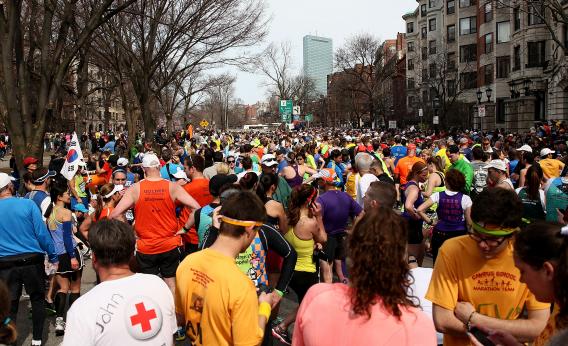Did the Boston Marathon Bomber Time the Explosions to Guarantee the Most Possible Casualties?
The first of two bombs that exploded at the Boston Marathon yesterday went off with 4:09:43 on the clock at the finish line, with the second following shortly thereafter. That timing raises suspicion that the bomber wanted the blast to happen when an exceptionally high volume of people would be massed near the finish line.
In the graph above, each blue bar represents a minute of completion time in the 2012 Boston Marathon—the last race where we have complete data—and the height of each bar represents the number of people who finished in that minute. As it shows, the most common completion times surround the four-hour mark.
Boston Marathon runners are divided into waves, with the vast majority starting in Wave 1 (at 10:00 a.m. EDT), Wave 2 (at 10:20) and Wave 3 (at 10:40). It’s worth noting that, since there are 9,000 runners in each of these three waves, not every runner begins the race at exactly those times—there can be delays of several minutes, if not more, before runners make it through the pack and reach the starting line. The red line in the graph reflects the time elapsed from the moment the first group of Wave 3 runners started the race and the instant the first bomb went off. As it shows, the bombs exploded as many Wave 3 runners finished around 4:10 and as runners who started further back in the wave reached other times close to the median—4:09, 4:08, 4:07, etc.
The bombs also hit as Wave 2 runners, who had started 20 minutes before Wave 3, completed the race around the 4:30 mark and Wave 1 runners, who started 40 minutes before, completed it in around 4:50.
In other words, the bombs went off as the traffic crossing the finish line—and presumably the volume of spectators watching their family members and friends finish—would be near its peak.
Heather Brady contributed to this report.
Read more on Slate about the Boston Marathon bombing.

